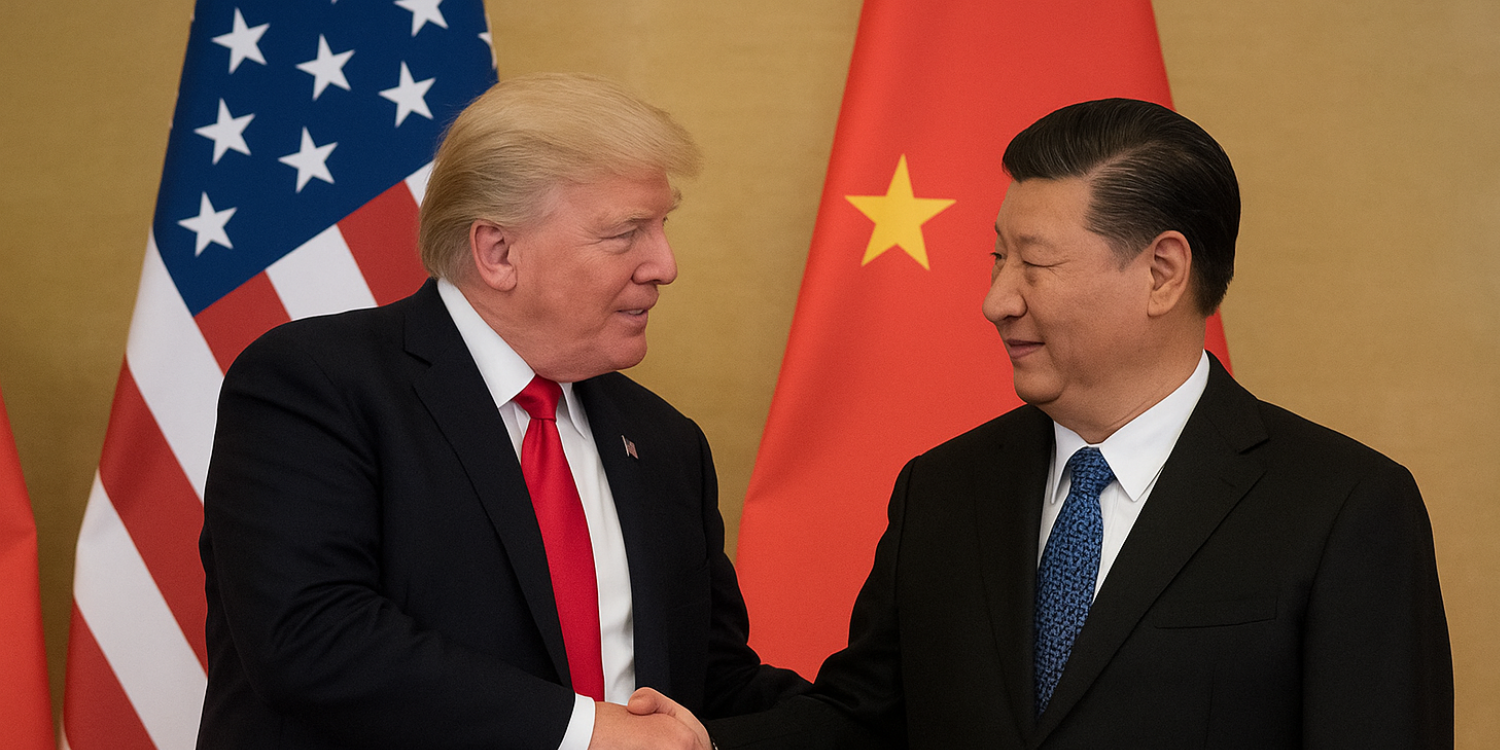At a high-stakes summit in South Korea, former U.S. President Donald Trump and Chinese President Xi Jinping met to calm years of rising trade tensions. After months of back-and-forth tariffs, export restrictions, and strategic posturing, the meeting was seen as a potential reset moment for the world’s two largest economies.
In a press briefing after the talks, Trump announced that the United States would cut its average tariff on Chinese imports from around 57 % to 47 %. In return, China agreed to delay its planned export restrictions on rare-earth minerals — materials crucial for producing advanced chips, electric-vehicle batteries, and defense technologies — for at least one year. Beijing also pledged to resume large-scale purchases of U.S. agricultural products, including soybeans, and to strengthen enforcement against the export of fentanyl precursors, a growing concern in Washington.
Trump called the meeting a “twelve out of ten,” declaring it a tremendous success. But analysts were quick to temper expectations, warning that while the tone had shifted from confrontation to cooperation, the deeper structural tensions that define U.S.–China relations remained unresolved.
Market Reactions: Relief, but Cautious
Global markets responded with cautious optimism. Asian equities initially rose on the news, particularly in South Korea and Japan, where export-driven industries are highly sensitive to trade developments. However, gains in the Shanghai Composite and Hong Kong’s Hang Seng Index faded quickly as investors realized that the agreement was more of a short-term truce than a long-term trade framework.
Oil prices slipped slightly amid mixed signals about global demand, while the U.S. dollar strengthened modestly, reflecting investor caution. The bond market saw a minor uptick in yields as traders priced in a lower-risk premium after months of geopolitical tension.
Analysts described the development as a “tactical pause” rather than a full reset. Many of the underlying issues — particularly access to advanced semiconductor technology, intellectual-property enforcement, and overall economic decoupling — were left untouched. As a result, investors remained hesitant to call it a turning point for global trade.
Sector-Specific Impacts
1. Supply Chains and Rare-Earths
China’s agreement to suspend its rare-earth export limits brought immediate relief to U.S. and European manufacturers. These materials are essential for electronics, renewable energy, and defense systems, and any disruption could have severe ripple effects across multiple industries. However, the one-year timeframe leaves lingering uncertainty. Businesses welcomed the breathing room but recognized that they are still exposed to future policy shifts from Beijing.
2. Agriculture
The renewed Chinese commitment to buy U.S. soybeans and other farm goods was a morale boost for American farmers, who have endured years of tariff pain and volatile demand. Yet, agricultural analysts warned that promises of “tremendous purchases” have appeared before, only to fall short in execution. Market participants are watching for actual shipment data before pricing in long-term optimism.
3. Technology and Semiconductors
Notably absent from the agreement were any breakthroughs on semiconductor exports or high-tech collaboration. U.S. restrictions on companies supplying cutting-edge chips to China remain in place, and Beijing continues to accelerate its self-reliance strategy. The omission reinforces the idea that the tech rivalry is more strategic than economic — a contest for dominance in artificial intelligence, quantum computing, and advanced manufacturing that no handshake alone can resolve.
4. Broader Global Impact
For global markets, even a partial thaw in U.S.–China trade relations is significant. It reduces the immediate threat of new tariffs or supply-chain blockages, which had weighed on investor sentiment since early 2024. Emerging-market currencies, commodities, and cyclical sectors all saw brief rallies. However, with the details still vague, the durability of this optimism will depend on follow-through.
What to Watch Next
- Implementation and Verification: The real test will be whether China follows through on its agricultural purchases and maintains the rare-earth export pause. Markets will look for evidence, not just rhetoric.
- Technology Diplomacy: Semiconductor policy remains the pressure point. Any subsequent talks about licensing, chip exports, or intellectual-property safeguards could shape the next market cycle.
- Tariff Roadmap: Investors are waiting for clarity on whether the U.S. will consider deeper tariff reductions beyond the 47 % level, and whether China will reciprocate with lower barriers or expanded market access for foreign firms.
- Market Sentiment: With volatility still high, traders are wary of headlines that could swing markets in either direction. Even a single policy tweet or unplanned remark from either leader could reignite tensions.
- Geopolitical Undercurrents: The talks avoided flashpoints like Taiwan, the South China Sea, and global energy alignment — topics that could quickly overshadow trade if disagreements flare again.
Conclusion: A Pause, Not a Peace
The Trump–Xi meeting marked an important symbolic gesture, signaling that both leaders recognize the cost of prolonged confrontation. The reduction in tariffs, the pause on rare-earth restrictions, and renewed agricultural trade are all tangible steps toward stability. Yet beneath the headlines lies a more complex truth — this was a tactical pause in a much broader rivalry.
The core issues defining the modern U.S.–China relationship — technological supremacy, strategic influence, and economic self-sufficiency — remain far from resolution. Markets may enjoy temporary calm, but the undercurrent of competition continues to shape global trade dynamics.
For now, investors and businesses alike can breathe a little easier. The storm has subsided, but the clouds haven’t cleared. The world’s two largest economies have opened the door to dialogue — but whether that doorway leads to cooperation or renewed conflict will depend on what comes next.











